I feel as though I am starting a new adventure. It’s my first taste of doing an art course online, so I am both excited and daunted at how it is going to work. I’ve set up my laptop in a corner of the garage (no fancy studio here) and I have my art materials at the ready with a hot cup of tea in hand. I press play on the video and Jesse Leroy-Smith, one of the favourite tutors at the Newlyn School of Art appears on the screen. Thankfully, Jesse’s familiar friendly manner immediately puts me at ease.
Having hugely enjoyed his Modern Portrait course in person some time ago, I am really looking forward to doing this Inspired by Leonardo course. Many decades ago, when I was doing my art foundation course, Leonardo de Vinci was my inspiration. I had reproductions of his drawings plastered all over my walls. I was fascinated by his skill but also by his curiosity and hunger for knowledge. Jesse, it turns out, was even more of a fan and, as an art student, used to reproduce Leonardo’s most iconic paintings in chalk on the pavement outside John Lewis in Oxford Street or in Covent Garden. His 20-foot-long The Last Supper, apparently, always earned him the most coins in his hat. Doing these drawings over and again embedded Leonardo into Jesse’s sensibility and was a huge influence on his own work.
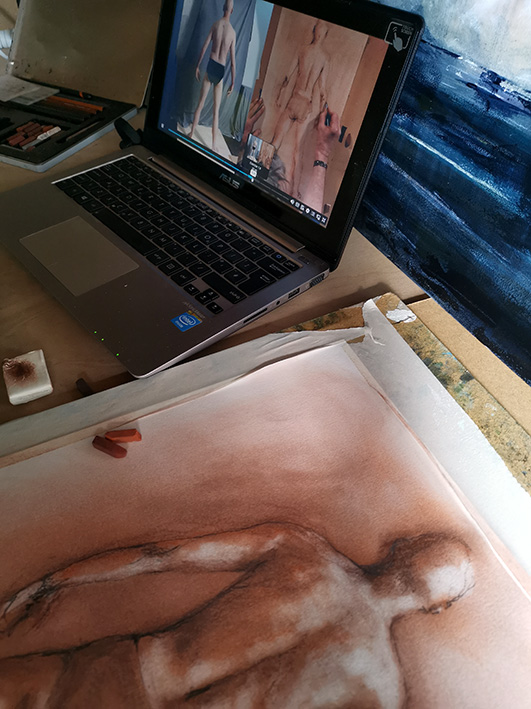

After Jesse’s fascinating introduction into Leonardo, the Renaissance and the many-layered influences of the time, we turn to our first practical exploration of the artist’s techniques. We jump right in with a figure drawing in Conté chalks – a full figure standing with his back to us, before focussing on a single leg, then a loose portrait. Our models are filmed in real-time, with a split-screen allowing us to see Jesse’s drawing in progress.
“Leonardo’s drawings are phenomenal for being still and stable in a way, but also look as though they are alive,” Jesse says as his chalk moves back and forth over his paper. This is what we are trying to capture in our own drawings. “Drawing is about exploring and muscle memory. If you want to make your drawing stronger, you have to practice looking more at your subject than at your drawing.”
At his suggestion, I draw without measurement, quickly and instinctively, barely looking at the paper, before knocking it all back and beginning again, either going in again with chalk or creating what Jesse describes as “a different level of agitation and urgency” with a rubber. The final result is intriguing. Perhaps not terribly accurate (in my case anyway), but that isn’t the aim here. As Jesse frequently reiterates, every wave of mark-making, each completed drawing, is simply a rehearsal. Besides, “there’s nothing more exciting than seeing a history of marks in a drawing”. He refers to Leonardo’s cartoon in the National Gallery, where you can see several ghosts of feet and hands, plotted then reworked: “it’s wonderful, because it feels timeless. You can see the inner workings of Leonardo’s mind, his process naked and exposed.”
Next, we explore three elements of Leonardo’s work: mindfully looking at a stained wall – observing how the imagination is fired by the myriad of forms and layers in the surface, then bringing that curiosity and imagination into our drawings; drawing the flow of water in a stream (Leonardo made hundreds of drawings of water and theme of the deluge is embedded into much of his work); and observing and drawing an egg – how light and shadow plays across its surface and trying to capture the fragility and essence of what the egg represents. Within these three aspects, we’re told –– the real magic happens. If we continue practicing capturing these three elements (the ‘Holy Trinity’ as Jesse calls them), our drawings will be much improved.
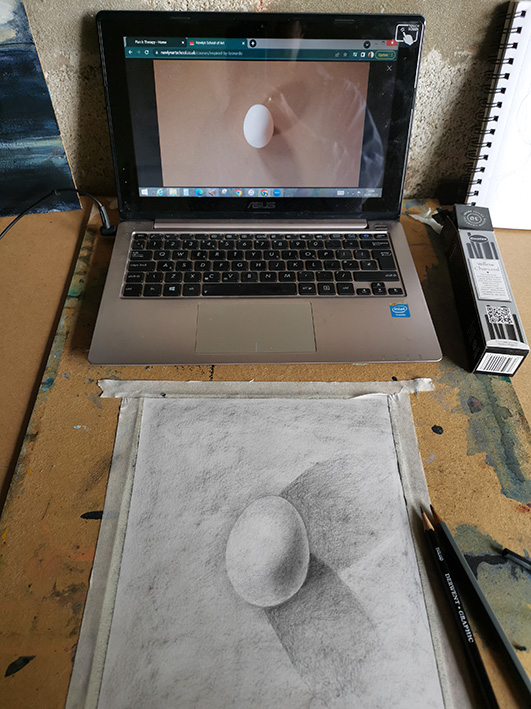
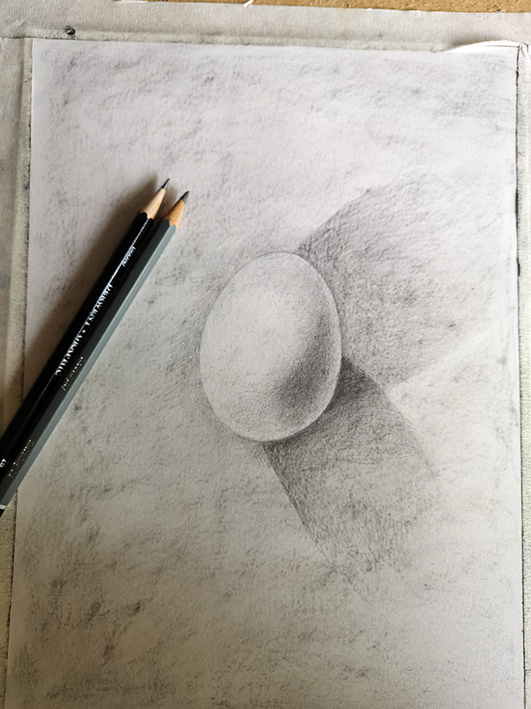
Jessie suggests that ideally we would make one hundred studies of the beautifully-lit egg, just as Leonardo did when he was a young artist. I’ve only made my way through three so far, and that was challenging to say the least, albeit quietly absorbing. Trying to capture the spirit and energy of flowing water was another surprisingly tricky and energetic exercise. Staining papers for later drawings (as a nod to the film of a sea wall we studied earlier), was pure fun.
Bringing all these elements together, we take our stained paper and draw fabric that has been softly-draped over our model, capturing the light and shadow of the drapery as if it is flowing water. Later, we attempt to draw a portrait, trying to capture “that huge metaphysical thing that is a human being” with the same poetry and tenderness with which we approached drawing the egg. All the while, we are learning about the power or subtlety of line, how to build up our sensitivity to mark-making, figuring out what the focus of our drawing should be, and what to leave out. Leonardo, of course, being the master of understatement.

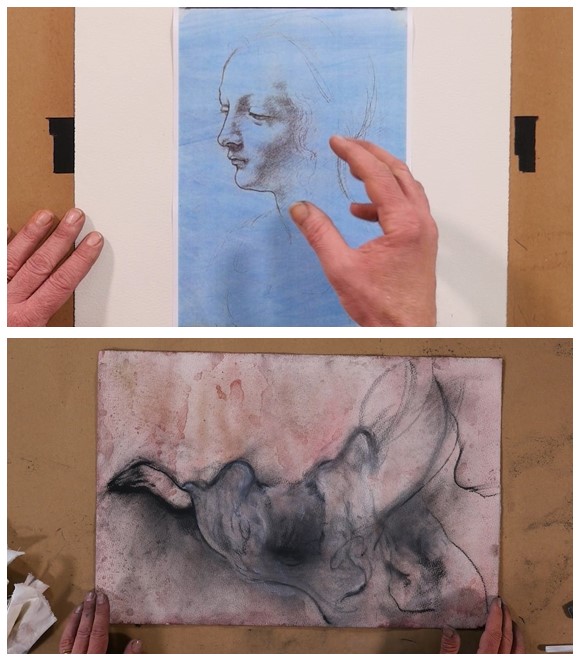
I really feel as though my artistic muscles are being flexed. I’m clearly no Leonardo but, as Jesse says, it’s not about trying to draw like the master, it’s about taking his example: developing the skill of deep looking, honing your drawing skills and bringing a vivacity of marks and energy to your work.
Completing the assignments isn’t the end of this richly-packed course: in fact, Jesse suggests that this is just the beginning. To gain the most benefit, we would start all over again – something I will be doing for certain. It would be easy to fill a whole month with the exercises here.
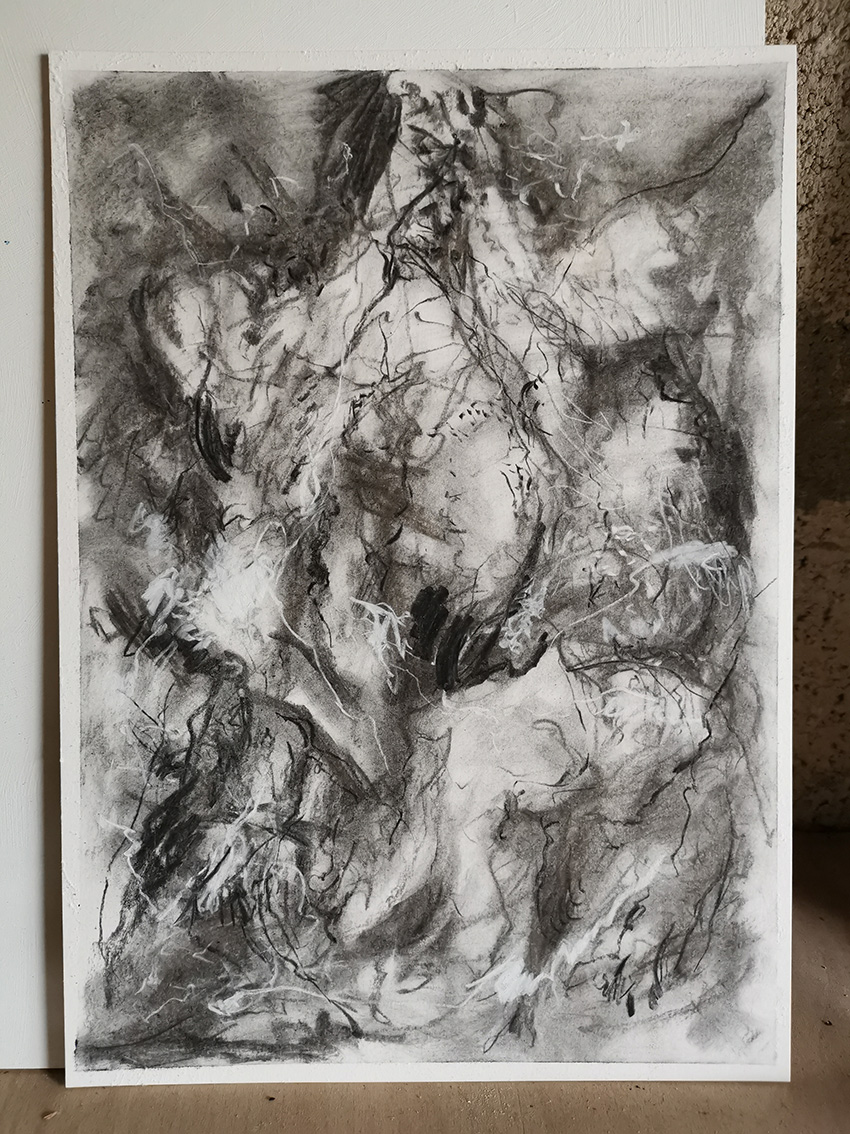

It’s clear that a huge amount of thought and passion has gone into creating this course. “Going back to Leonardo – to drawing the egg, the stained wall and the water – has reminded me of something that meant a lot to me,” admits Jesse. “It’s this interconnectedness that makes his art so extraordinary.” I can’t help but agree.
For those of you that feel you shouldn’t be looking at Leonardo for inspiration – you should simply be creating your own thing – then here’s a last thought from Jesse: “Working through the techniques used by the great masters, like Leonardo, is a way of finding and honing your individuality: Eventually, when you find yourself deviating from that person’s [technique or style], you’ll find that that’s your voice. It’s you, not Leonardo, speaking. And that’s an incredibly profound and rewarding experience.”